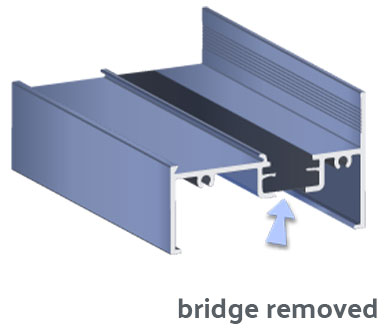UNDERSTANDING THE PROCESS

PREPARE
An aluminum window profile is designed and extruded with a strategically placed channel to encapsulate the Azon insulating polymer. The channel surface is conditioned by using one of two machinery devices that produce a mechanical lock to enhance the shear strength of the resulting polymer and aluminum composite.

POUR
Employing the Azon Fillameter™ equipped with the Azon Tornado III™ dynamic mixer, two-component polyurethane is dispensed as a liquid into the thermal barrier channel. Within minutes, the thermal core solidifies into a very strong, structural polymer.

DEBRIDGE
The extrusion is transported to the Azon Bridgemill™ for the third step in the process—removal of the metal bridge from the bottom of the channel to produce a true, non-metal-to-metal structural thermal barrier. The pour and debridge method is suitable for withstanding the most demanding climates and conditions with higher performance in impact resistance, shear strength and heat distortion than alternative methods.


